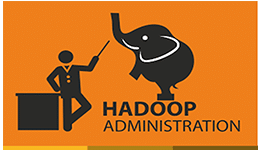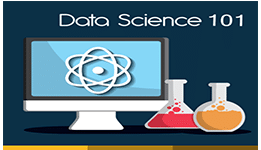Why Data science Training In kharadi at Prwatech,
We’re India’s Leading Training institute for Data science offering world class courses with 100% Job assistance.
- Wi-Fi Class Rooms
- Get trained by the finest qualified professionals
- 100% practical training
- Flexible timings
- Real-Time Projects
- Resume Writing Preparation
- Mock Tests & interviews
- Access to Our Learning Management System Platform
- Access to 1000+ Online Video Tutorials
- Weekend and Weekdays batches
- Affordable Fees
- Complete course support
- Guidance till you reaches your goal.
Upgrade Your Self with Data science training classes in kharadi!!!
The Pune IT market, broadly speaking the IT world currently, gets upgraded with ever-renewing technologies every moment. If one doesn’t have much experience of coding and doesn’t have a good hands-on scripting experience but still wants to make a mark in the technical career that too in the IT sector, Data science training classes in kharadi is probably the place one needs to start at. Taking up professional Data science Training in kharadi is thus the best option to get to the depth of this language. If one doesn’t have much experience of coding and doesn’t have a good hands-on scripting experience but still wants to make a mark in the technical career that too in the IT sector, Data science classes in Pune is probably the place one needs to start at. Taking up professional Data science training institute in kharadi is thus the best option to get to the depth of this language.
Modules of Data science Training in kharadi
Module 1: Python Essentials
Learning Objective: To understand why Python is a useful scripting language for developers. To learn how to design and program Python applications.
Introduction
- What is Python..?
- A Brief History of Python
- Why Should I learn Python..?
- Installing Python
- How to execute Python program
- Write your first program
- Variables & Data Types
- Variables
- Numbers
- String
- Lists, Tuples & Dictionary
- Conditional Statements & Loops
- If…statement
- If…else statement
- elif…statement
- The while…Loop
- The for….Loop
- Control Statements
- Continue statement
- Break statement
- Pass statement
- Functions
- Define function
- Calling a function
- Function arguments
- Built-in functions
- Modules & Packages
- Modules
- How to import a module…?
- Packages
- How to create packages
- Classes & Objects
- Introduction about classes & objects
- Creating a class & object
- Inheritance
- Methods Overriding
- Data hiding
- Files & Exception Handling
- Writing data to a file
- Reading data from a file
- Read and Write data from CSV file
- Try…except
- Try…except…else
- Finally
- OS module
Module 2: Statistics
Learning Objective: Demonstrate knowledge of statistical data analysis techniques utilized in decision making. Apply principles of Data Science to the analysis of problems. Be able to restate an investigative question in terms of a statistical model or algorithm.
- Inferential statistics
- Standard error
- Confidence interval
- Hypothesis testing
- p-value
- Sample vs. population mean
- Variance of population
- Probability and statistics
- Probability density functions
- Poisson Process
- Law of large numbers
- Normal distribution
- Sampling distribution
- Mean
- Variance of Bernoulli
- Regression
Module 3: Introduction to Machine Learning (ML)
Learning Objective: The purpose of machine learning is to discover patterns in your data and then make predictions based on those often, complex patterns to answer business questions, and help solve problems. Machine learning helps analyze your data and identify trends.
- Introduction
- What is Machine learning?
- Overview about sci-kit learn and tensorflow
- Types of ML
- Some complementing fields of ML
- ML algorithms
- Machine learning examples
- NumPy Arrays
- Creating multidimensional array
- NumPy-Data types
- Array attributes
- Indexing and Slicing
- Creating array views and copies
- Manipulating array shapes
- I/O with NumPy
- Working with Pandas
- Installing pandas
- Pandas data frames
- Pandas Series
- Data aggregation with Pandas Data Frames
- Concatenating and appending Data Frames
- Joining Data Frames
- Handling missing data
- Python Regular Expressions
- What are regular expressions?
- The match Function
- The search Function
- Matching vs searching
- Search and Replace
- Extended Regular Expressions
- Wildcard
- Python Oracle Database Access
- Install the cx_Oracle and other Packages
- Create Database Connection
- CREATE, INSERT, READ, UPDATE and DELETE Operation
- DML and DDL Operation with Databases
- Performing Transactions
- Handling Database Errors
- Disconnecting Database
- Regression based learning
- Simple regression
- Multiple regressions
- Logistic regression
- Predicting house prices with regression
- Clustering based learning
- Definition
- Types of clustering
- The k-means clustering algorithm
- Data mining
- Introducing data mining
- Decision Tree
- Affinity Analysis
- Clustering
- Introducing matplotlib
- Bar Charts
- Line Charts
- Scatter plots
- Bubble charts
- Working with openCV
- Setting up opencv
- Loading and displaying images
- Applying image filters
- Tracking faces
- Face recognition
Module 4: Performing predictions with Linear Regression
Learning Objective: The basic objective of this course is to learn How to calculate a simple linear regression step-by-step, How to perform all of the calculations using a spreadsheet, How to make predictions on new data using your model, A shortcut that greatly simplifies the calculation.
- Simple linear regression
- Multiple regressions
- Training and testing model
- Introduction to Python
- Installation of Python framework and packages: Anaconda & pip Writing/
- Running python programs using Spyder Command Prompt Working with Jupyter
- Notebooks.
- Creating Python variables
- Numeric, string and logical operations
- Data containers: Lists, Dictionaries, Tuples & sets Practice assignment
- Iterative Operations & Functions in Python
- Writing for loops in Python
- While loops and conditional blocks List/Dictionary comprehensions with loops
- Writing your own functions in Python Writing your own classes and functions
- Data Handling in Python using NumPy & Pandas
- Introduction to NumPy arrays, functions & properties Introduction to Pandas &
- Data frames
- Importing and exporting external data in Python Feature engineering using
- Python
- Data Science & Machine Learning in Python
- Converting business problems to data problems
- Understanding supervised and unsupervised learning with examples
- Understanding biases associated with any machine learning algorithm Ways of
- Reducing bias and increasing generalization capabilities Drivers of machine
- Learning algorithms
- Cost functions
- Brief introduction to gradient descent
- Importance of model validation
- Methods of model validation
- Cross validation & average error
- Generalized Linear Models in Python
- Linear Regression
- Regularization of Generalized Linear Models
- Ridge and Lasso Regression
- Logistic Regression
- Methods of threshold determination and performance measures for Classification score models
- Tree Models using Python
- Introduction to decision trees
- Tuning tree size with cross validation Introduction to bagging algorithm Random
- Forests
- Grid search and randomized grid search ExtraTrees (Extremely Randomised
- Trees) Partial dependence plots
- Support Vector Machines (SVM) & kNN in Python
- Introduction to idea of observation based learning Distances and similarities
- k Nearest Neighbors (kNN) for classification Brief mathematical background on
- SVM Regression with kNN & SVM
- Unsupervised learning in Python
- Need for dimensionality reduction
- Principal Component Analysis (PCA) Difference between PCAs and Latent
- Factors Factor Analysis
- Hierarchical, K-means & DBSCAN Clustering
- Text Mining in Python
- Gathering text data using web scraping with urllib
- Processing raw web data with BeautifulSoup
- Interacting with Google search using urllib with custom user agent collecting twitter data with
- Twitter API
- Naive Bayes Algorithm
- Feature Engineering with text data
- Sentiment analysis
FREQUENTLY ASKED QUESTIONS ON Data science Training in kharadi
1.Does Prwatech provide Placement assistance?
Answer: Yes, we do have a 100% Placement assistance program with us whoever completes Data science Training in kharadi with us can get it.
2.What are the types/ Modes of Training available?
Answer: Prwatech, Providing two modes of Training for those who are willing to join Data science training in kharadi i.e. Classroom Training mode & Online classes. So one can choose the best & comfortable option.
3.Do Prwatech Provide Course Certification?
Answer: Yes, We do provide the Data science Course which helps to provide advanced certification to the candidates who all are the complete courses with us.
4.Do Prwatech Provide Video tutorials?
Answer: yes, we do have dedicated YouTube Channel where one can easily get all our Training videos easier.
















